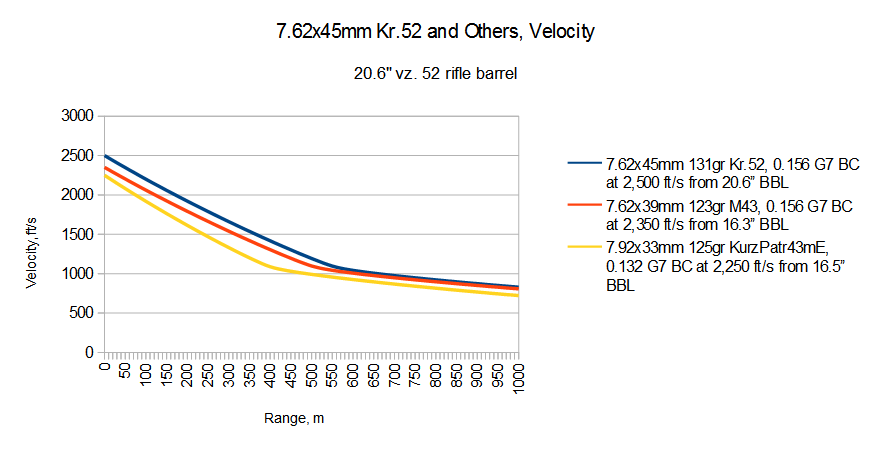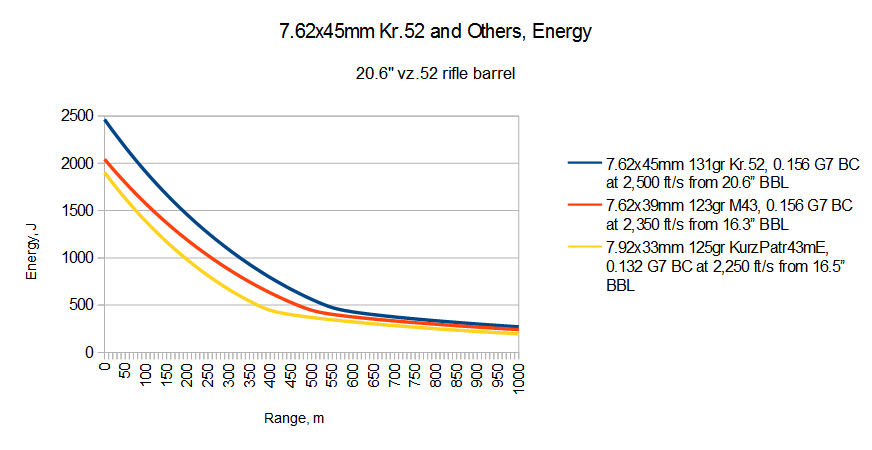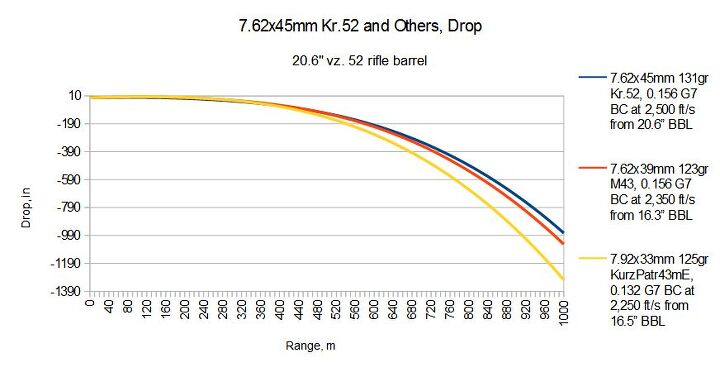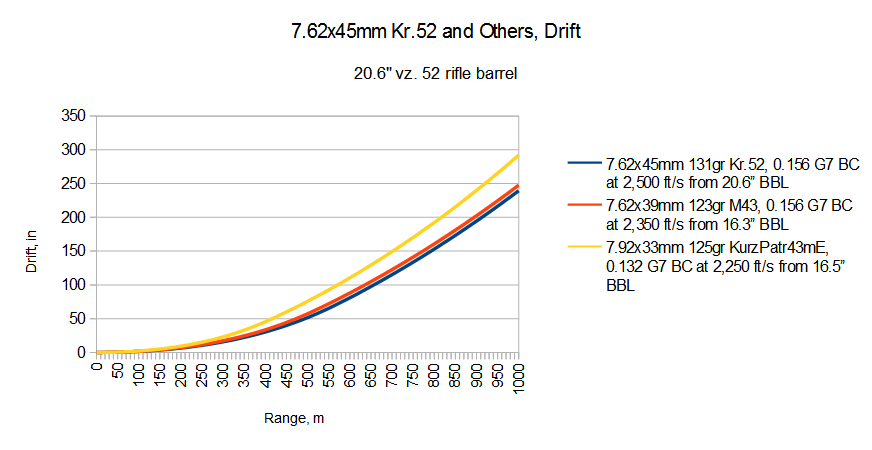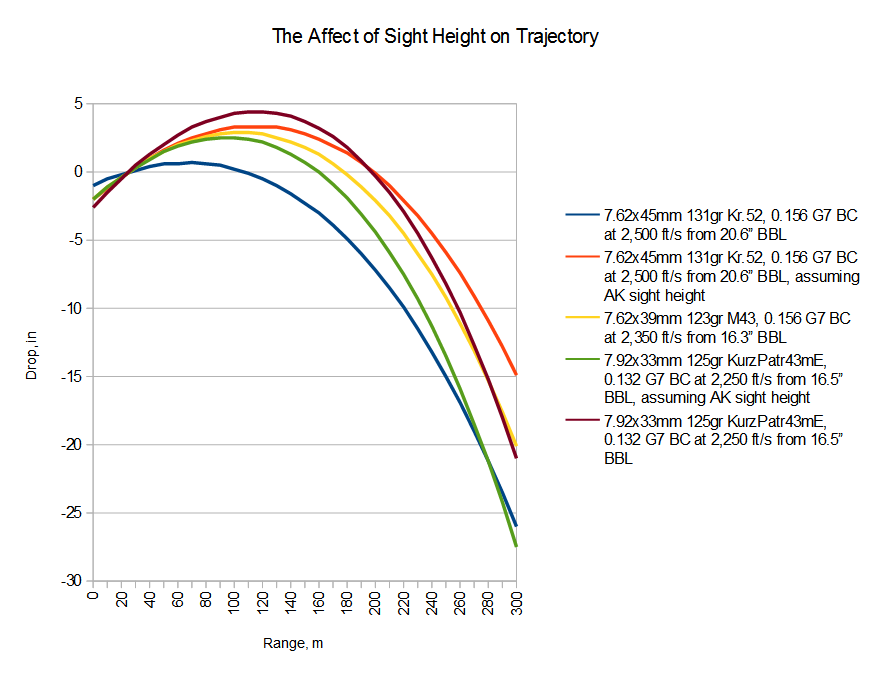After World War II, the nations of the world retired to lick their wounds and rebuild, but their arms engineers also began thinking about the next war. The war have brought forth a storm of new technologies and inventions, and one of the most significant in the field of small arms was the finally mature assault rifle in the form of the Nazi-developed “Sturmgewehr”, and its intermediate 7.92x33mm Kurzpatrone cartridge. One nation that took notice of this new weapon and its ammunition was the newly reconstituted Czechoslovakia. That nations engineers quickly took to copying and improving the 7.92 Kurz caliber, producing by the early 1950s a short-lived but unique round called the 7.62x45mm Kr.52, or more popularly the 7.62×45 Czech. The 7.62×45’s projectile was a near copy of the Kurzpatrone’s stubby, steel-cored one, but its case was much longer, while being slightly thinner, and having a greater internal volume. This gave the Czech round an additional 250 ft/s muzzle velocity versus the German 7.92×33 when fired from the barrel of the rifle that was designed alongside it, the strange but wonderful vz. 52.
The 7.62×45 was short-lived, as the pressure from the Soviet Union on Czechoslovakia to standardize its ammunition with the Russian 7.62x39mm caliber won out in 1956, and all future Czech individual weapons were slated to be chambered for that round. Still, the round is historically and ballistically interesting. Let’s take a look:
I want to point out something relevant to the subject of ballistics in general, that being the effect of sight height over bore on the trajectory of the ammunition. Point-blank range is defined, in ballistics terms, as the distance within which a shot aimed directly at the target, with no elevation correction, will hit the target. This relationship is defined by the flatness of the round’s trajectory, but also by the height of the sights over the bore line, or more exactly, the cant of the sights in relationship with the barrel. Essentially, the more the barrel is canted up in relation to the sights, the further along the path of the bullet as it drops the target can be before it drops low enough to need sight adjustment. An extreme example of this principle are the canted sights on a low-velocity grenade launcher, but by playing around with the sight height inputs in JBM’s calculator, we can also get an idea of how it affects intermediate rifle cartridges:
Notice how much further the orange line crosses the -5 inch drop line in its trajectory than the blue line does, despite both lines representing the exact same round. The extra inch of sight height of the AK platform vs. the vz. 52 rifle gives the 7.62x45mm round an additional 65 meters of point blank range on a 10″ target!
Note: All ballistic calculations are done with JBM’s Trajectory calculator, using the ballistic coefficient appropriate to the projectile being modeled, and in this case assuming a vz. 52 rifle as the firing platform. Also, keep in mind that there is no single true velocity for a given round; velocity can vary due to a large number of factors, including ambient temperature and chamber dimensions. Instead, I try to use nominal velocity figures that are representative of the capability of the round in question.
Postscript: Since I’ve decided to expand this series to calibers that – while they may still be ballistically relevant to the wider conversation about intermediate calibers – are no longer actually being produced or tested, I have decided to re-name some of the posts in this series to “Historical Intermediate Calibers”. However, I will retain the same numerical sequence and the word “Modern” struck through. Enjoy!
 Your Privacy Choices
Your Privacy Choices

